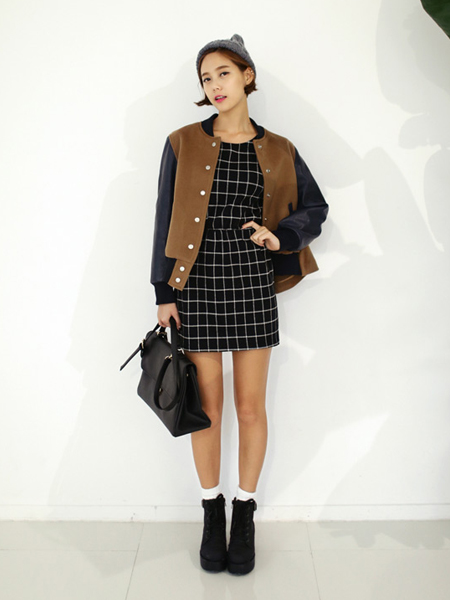Sportswear skirt dress highlights the different fashion sense
Ben Wang, Oct. 18th, said that different products with different feelings displayed a distinctive atmosphere. This is a certain sense of fashion that Mix & Match Look has to a certain extent. Sports sweaters with feminine skirts, or feminine dresses and vintage baseball jackets, are typical mix and match styles. Let's take a look at the influx of people's interpretations. Casual + cute baseball jacket, leathery color matching sleeve design, loose version of the type, take a retro sense of Plaid suit, interpretation of a mixed style of children. Simple gray hoodie, kangaroo pocket configuration, casual and comfortable atmosphere, under the dark blue high waist skirt, socks and sports shoes with a mix of showing a very casual mix. The casual style of the wide-fitting sweater is simple in design. It is decorated with English letters and pinstripes, and a simple A-shaped flare skirt and sports shoes make the overall mix-and-match look more interesting. Orange-red hooded sweater, simple and loose money, relaxed atmosphere and comfortable, wearing a gray slim skirt, showing the casual yet lovely atmosphere of fall children. Stylish baseball shirts, fancy houndstooth pattern decoration, and leather sleeves splicing design also enhance the fashion index for the styling and create a trendy model with a full range of tidal wave children. (Cooperative Media: Garment Collocation) Tie-dye is a modern term invented in the mid-1960s in the United States (but recorded in writing in an earlier form in 1941 as "tied-and-dyed", and 1909 as "tied and dyed" by Luis C. Changsut, referenced below)[1] for a set of ancient resist-dyeing techniques, and for the products of these processes. The process of tie-dye typically consists of folding, twisting, pleating, or crumpling fabric or a garment and binding with string or rubber bands, followed by application of dye(s).[2] The manipulations of the fabric prior to the application of dye are called resists, as they partially or completely prevent the applied dye from coloring the fabric. More sophisticated tie-dyes involve additional steps, including an initial application of dye prior to the resist, multiple sequential dye and resist steps, and the use of other types of resists (stitching, stencils) and discharge. Tie-dye Tie-dye Shaoxing Yingcai Textiles Co.,Ltd , https://www.blg-yc.com




Unlike regular resist-dyeing techniques, tie-dye is characterized by the use of bright, saturated primary colors and bold patterns. These patterns, including the spiral, mandala, and peace sign, and the use of multiple bold colors, have become cliched since the peak popularity of tie-dye in the 1960s and 1970s. The vast majority of currently produced tie-dyes use these designs, and many are mass-produced for wholesale distribution. However, a new interest in more 'sophisticated' tie-dye is emerging in the fashion industry, characterized by simple motifs, monochromatic color schemes, and a focus on fashionable garments and fabrics other than cotton.[3] A few artists[4][5][6] continue to pursue tie-dye as an art form rather than a commodity.
